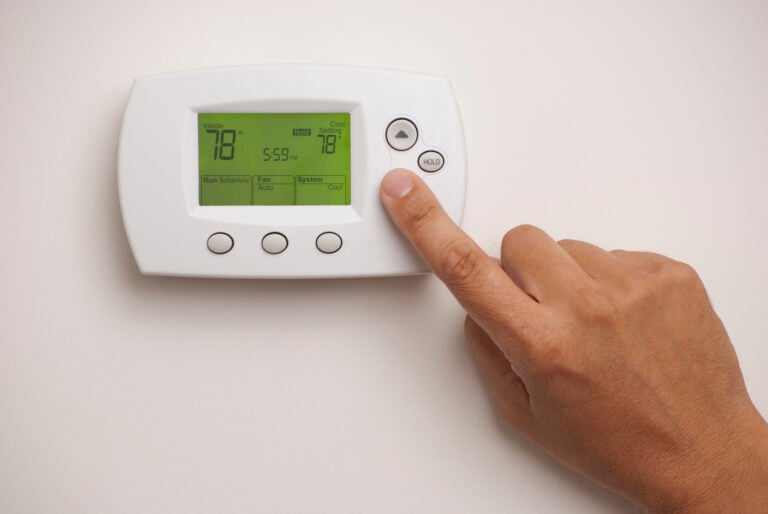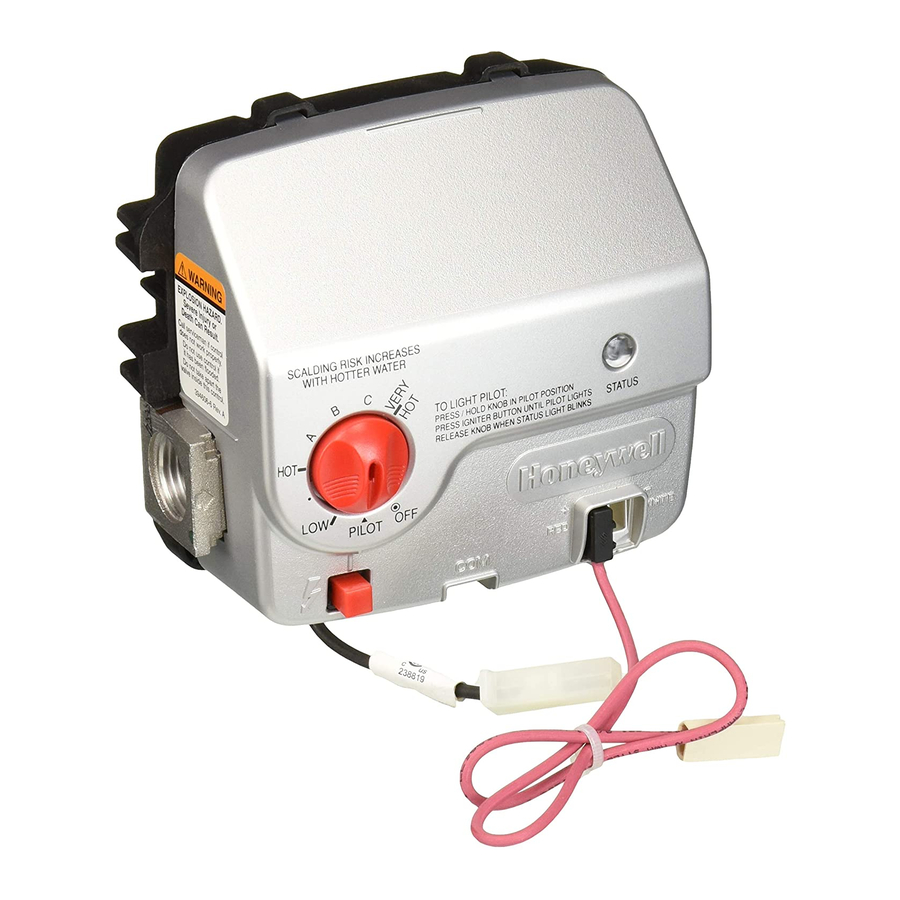Are you dealing with a Honeywell water heater that’s not performing up to par? Maybe you’ve noticed the water isn’t as hot as it should be, or perhaps it’s making strange noises.
Whatever the issue, you’re not alone. Many homeowners face similar frustrations, and the good news is that troubleshooting your Honeywell water heater can often lead to simple solutions. In this guide, we’ll walk you through the most common problems and how to fix them.
You’ll gain the confidence to tackle minor issues yourself, potentially saving time and money. So, if you’re ready to restore your water heater to its optimal performance, keep reading. Your path to a hassle-free hot water experience starts here.
Page Contents
Common Issues
Honeywell water heaters are reliable, but they can encounter issues. Users often face common problems that disrupt comfort. Identifying these issues helps in resolving them efficiently. Understanding these problems is crucial for a consistent hot water supply.
No Hot Water
Finding no hot water is frustrating. This issue often relates to the thermostat. Check if it is set to the correct temperature. A faulty heating element might also cause this problem. Inspect the element for damage and replace if necessary.
Power supply issues can also lead to no hot water. Ensure the heater is receiving power. Check the circuit breaker and reset if tripped. These simple checks can often resolve the problem.
Inconsistent Temperature
Inconsistent water temperature can be annoying. A malfunctioning thermostat could be the cause. Verify the thermostat settings and adjust as needed. Sediment buildup in the tank can affect temperature consistency. Regularly flushing the tank helps maintain efficiency.
Another factor could be a faulty dip tube. The dip tube directs cold water to the bottom of the tank. If damaged, it might mix with hot water, leading to temperature fluctuations. Replacing the dip tube can resolve this issue.

Credit: www.4abc.com
Diagnostic Tips
Honeywell water heaters are known for their efficiency. Yet, like any appliance, they can have issues. Diagnosing these problems can save you time and money. Follow these diagnostic tips to keep your water heater running smoothly.
Check Power Supply
Ensure the water heater has power. Check the circuit breaker. Look for tripped switches. Reset them if needed. A working power supply is crucial. Without it, the heater won’t function.
Inspect Thermostat Settings
Thermostats control the heater’s temperature. Make sure they’re set correctly. A low setting can cause cold water. Adjust as needed. Consult your manual for guidance. Proper settings ensure optimal performance.
Look For Error Codes
Modern heaters display error codes. These codes help identify issues. Check the display panel for codes. Refer to the manual for code meanings. Address errors promptly. This prevents further damage.
Quick Fixes
Is your Honeywell water heater acting up? Don’t worry. Many issues can be fixed quickly. These simple solutions can help you get back to warm showers.
Resetting The System
Sometimes, a quick reset can solve many problems. Turn off the heater. Wait for a minute. Then, switch it back on. This can clear minor glitches. It helps the system reboot effectively.
Adjusting Thermostat
If your water is too hot or cold, check the thermostat. Adjust it to your desired temperature. Ensure you do not exceed the recommended settings. This prevents overheating and ensures safety.
Cleaning The Burner
A dirty burner can affect heating. Turn off the heater and wait for it to cool. Remove the burner cover carefully. Clean the burner with a brush. Ensure no debris remains. This helps the heater function smoothly.

Credit: www.youtube.com
Safety Precautions
Taking safety precautions is vital when troubleshooting Honeywell water heaters. Always switch off the power supply before inspecting any components. Ensure proper ventilation to prevent hazardous gas buildup during maintenance.
Ensuring your Honeywell water heater operates safely is crucial. Safety precautions are not just about following rules; they protect you and your home. Let’s delve into the essential safety measures you need to consider.Handling Electrical Components
When dealing with electrical components, always prioritize safety. Ensure the power supply to the water heater is off before you begin any troubleshooting. This simple step can prevent electrical shocks. Use insulated tools to handle electrical parts. It’s a small investment for your safety. Remember, even the most experienced technicians follow these precautions. Why take a risk when a few simple steps can keep you safe?Dealing With Gas Leaks
Gas leaks are serious and need immediate attention. If you suspect a gas leak, turn off the gas supply immediately. Do not attempt to fix it yourself; call a professional. Never use open flames or create sparks near a suspected gas leak. This includes avoiding switches or electronic devices. Your quick thinking can prevent a dangerous situation from escalating. Think about your last experience with a gas appliance. Did you notice any unusual smells? Paying attention to such details can be the difference between safety and disaster. Have you ever wondered if there’s more you could do to ensure safety? Regular checks and maintenance are key. Incorporate these precautions into your routine to keep your home safe.When To Call A Professional
When dealing with water heater issues, knowing when to call a professional can save you time and stress. Some problems can be fixed with a simple reset or by checking the thermostat. However, persistent issues or major repairs might need expert attention.
Persistent Issues
Is your water heater repeatedly giving you cold showers despite your best efforts? If you find yourself constantly adjusting settings without long-term success, it might be time to call in a professional. Persistent issues could indicate underlying problems that only an expert can diagnose and fix.
Imagine trying to fix a leaky faucet that keeps dripping no matter how many washers you replace. Sometimes, persistent issues are like that leak—your own efforts just won’t cut it. Don’t let frustration take over; professional help can bring a permanent solution.
Major Repairs Needed
Some repairs are simply beyond DIY territory. If you notice signs like significant water leaks, strange noises, or rusty water, these could indicate major internal problems. Attempting to fix these issues without the right expertise could lead to more damage and higher costs.
You wouldn’t try to replace your car’s engine without a mechanic, right? Treat your water heater the same way. It’s a complex system that demands professional skills when major repairs are involved.
Think about this: how much is your peace of mind worth? Investing in a professional service might seem costly upfront, but it often saves you money and hassle in the long run. Plus, you’ll have the assurance that your water heater is in safe hands.
Are you hesitating to make that call? Consider what’s at stake—your comfort, your safety, and your time. Sometimes, reaching out to a professional is the wisest choice you can make for your home and sanity.

Credit: www.manualslib.com
Frequently Asked Questions
How Do I Reset A Honeywell Hot Water Heater?
To reset a Honeywell hot water heater, locate the reset button. Press and hold it for 5-10 seconds. Ensure the heater is off before resetting. Check the manual for specific instructions related to your model. Always prioritize safety when handling electrical appliances.
How Do I Know If My Water Heater Control Valve Is Bad?
A faulty water heater control valve may cause irregular water temperature, leaks, or unusual noises. Inspect for visible damage or corrosion. If the pilot light won’t stay lit, it might indicate a problem. Consult a professional for accurate diagnosis if you notice these signs.
Why Is The Status Light On My Honeywell Water Heater Blinking?
The blinking status light on your Honeywell water heater indicates a system error. Check the error code. Refer to the user manual for troubleshooting steps. You might need to reset the system or contact a professional for assistance. Regular maintenance can prevent future issues.
How To Reset Thermal Switch On Water Heater?
Turn off power to the water heater. Open the access panel. Press the reset button on the thermal switch. Close the panel and restore power. Ensure the heater works correctly. If issues persist, consult a professional. Always follow safety guidelines.
Conclusion
Troubleshooting your Honeywell water heater can seem daunting. But it’s manageable. Start with simple checks like power and settings. Listen for unusual noises. Check for leaks. Many issues have easy fixes. Use the manual as a guide. If problems persist, contact a professional.
Regular maintenance helps prevent future issues. Keep your heater in good shape. A well-maintained heater runs efficiently. It saves money and energy. Remember, safety first. Always turn off power before repairs. Your Honeywell water heater should serve you well with care and attention.
Stay warm, stay safe!
